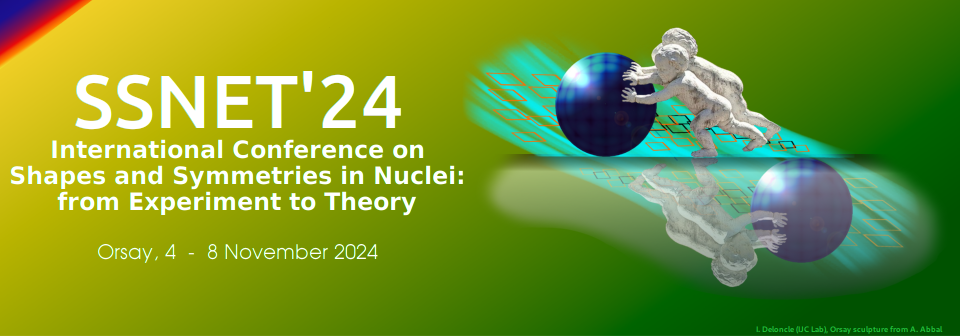Orateur
Description
Shape of nuclei is determined by a fine balance between the stabilizing effect of closed shells and the pairing and quadrupole forces that tend to induce deformation [1]. In the mass region around A=100, there exist clear cut examples of the rapid appearance of deformation such as Zr (even-even) [2] and Nb isotopes (odd-even) [3], which can be understood in terms of the coexistence of two different configurations, i.e., shape coexistence. Sr [4] isotopes are also good candidates to study the onset of nuclear deformation and the influence of shape coexistence, while Ru and Mo [5] isotopes seem to be placed at the border of dilution of shape coexistence In addition, the structural evolution of odd-mass isotopes in this region is significant due to the diversity of configurations and coexisting shapes and to the enhancement of the onset of deformation [3].
In this contribution will be used as framework the Interacting Boson-Fermion Model [6] with Configuration Mixing (IBFM-CM) to introduce a mean-field view (intrinsic state) for studying the evolution of the nuclear deformation in A=100 region, focussing on the case of odd-even Nb isotopes. Two complementary approaches will be used for studying shape evolution: first, an algebraic approach employing a laboratory frame of reference, and secondly, a geometric-oriented method within the context of an intrinsic state formalism. The objective is to compare the onset of deformation in Nb isotopes with the even-even cases, such as Sr and Zr, extracting information from the intrinsic state, but also from spectroscopic properties.
To conclude, by applying the IBFM-CM framework and employing both algebraic and geometric approaches, this contribution aims at providing insights into the evolution of nuclear shapes in even-even and odd-even nuclei in the mass region around A=100.
[1] K. Heyde and J. L. Wood, Rev. Mod. Phys. 83, 1467 (2011).
[2] J.E. García-Ramos and K. Heyde, Phys. Rev. C 100, 044315 (2019).
[3] N. Gavrielov, A. Leviatan, and F. Iachello, Phys. Rev. C 106, L051304 (2022).
[4] E. Maya-Barbecho and J.E. García-Ramos, Phys. Rev. C 105, 034341 (2022).
[5] E. Maya-Barbecho, S. Baid, J.M. Arias, and J.E. García-Ramos, Phys. Rev. C 108, 034316 (2023).
[6] F. Iachello and P. Van Isacker, The interacting boson-fermion model (Cambridge University Press, Cambridge, 1991).

